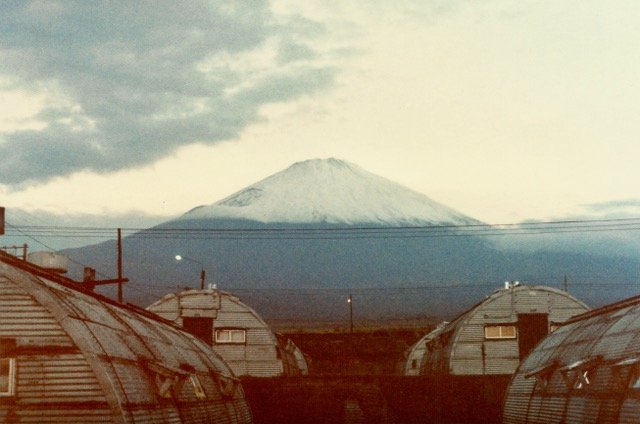It may have been the American Marines’ worst-ever peacetime disaster. Few people, though, other than those directly impacted, remember the terrible 1979 typhoon, fuel spill and fire in Japan.
A just-released book written by Chas Henry — husband of Rosemary Arzaga Henry, formerly of Araceli, Palawan — now tells the dramatic true story.
Fuji Fire: Sifting Ashes of a Forgotten U. S. Marine Corps Tragedy details the damage done by Typhoon Tip (known in the Philippines as Warling) when it passed over the U. S. Marines’ then-ramshackle camp on the lower slopes of Mount Fuji. Seventy-three people were injured in the incident. Fifty-four of them suffered burns. Of that number, 13 would die.
Beginning during the pandemic of 2020, Mr. Henry — retired from both the U. S. Marines and a second career in journalism — began what would become a four-year, two-continent investigation into the events.
Reviewing Fuji Fire in the U. S. newspaper Wall Street Journal, former U. S. Navy Secretary and Senator James Webb wrote, “The complexity of this story makes it exceedingly difficult to tell. Till now it has been little remembered and infrequently taught in our military academies. Mr. Henry’s scholarly rigor, knowledge of the military and storytelling skill may at last change that.”

What made Mr. Henry publish the book was deeply personal. He retired from his second career as a broadcast journalist at the end of 2019. When the pandemic hit soon after, he found himself stuck at home with little to do.
“In August of that year, I posted a few old photos on Facebook. One of them was of me as a young Marine corporal at Camp Fuji. I mentioned in passing that it had been taken about a year before the big fire there — and was shocked when so many people, including fellow Marines, asked ‘What fire?’ I had not been at the camp when the October 1979 disaster occurred, but news of the high casualty figure — in peacetime! — felt like a gut punch to those of us who had trained there. I was also embarrassed when another social media post arrived from a friend I had known since 1981. He had been caught in a burning hut at the camp that day, but had been able to escape. I had not known,” Mr. Henry said.
He added that it was difficult to realize that so few people knew anything about the tragic events.
“With time on my hands, I began doing a bit of online research. Soon, a fellow Marine shared a folder full of material about the disaster he had gathered during the mid-1980s. It provided names of some who had been impacted by the events. For more than a year, I used online search engines to locate people whose names and ages seemed to match those former Marines and Sailors. After mailing hundreds of postal letters, I began to make contact with people and arrange interviews.”
Many military historians offered useful material by email during years when the pandemic restricted in-person access to historical records. Eventually, as pandemic-related closures were lifted, Mr. Henry was able to spend days poring over documents in every conceivable national and military archive, then undertake a week of research at and around the U. S. Army burn center in San Antonio, Texas — where dozens of the Marines worst-injured in the incident had been treated — and two weeks in Japan.
“After recording more than 130 interviews, and collecting hundreds of documents, I spent years cross-checking information, then writing,” Mr. Henry added. “My goal was to credibly document what had happened to these fellow Marines. It is important that we remember — and take lessons from — what they endured.”
Fuji Fire is published by Potomac Books, an imprint of the University of Nebraska Press. It can be purchased directly through Amazon via this link https://www.amazon.com/
























